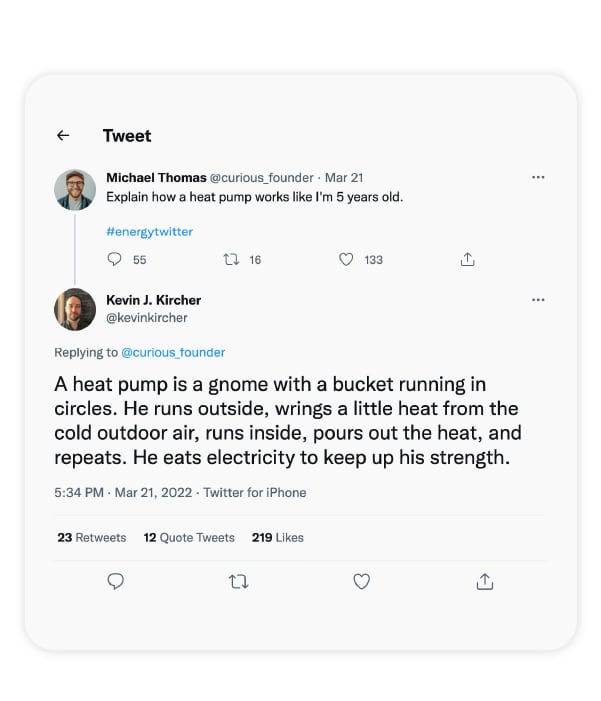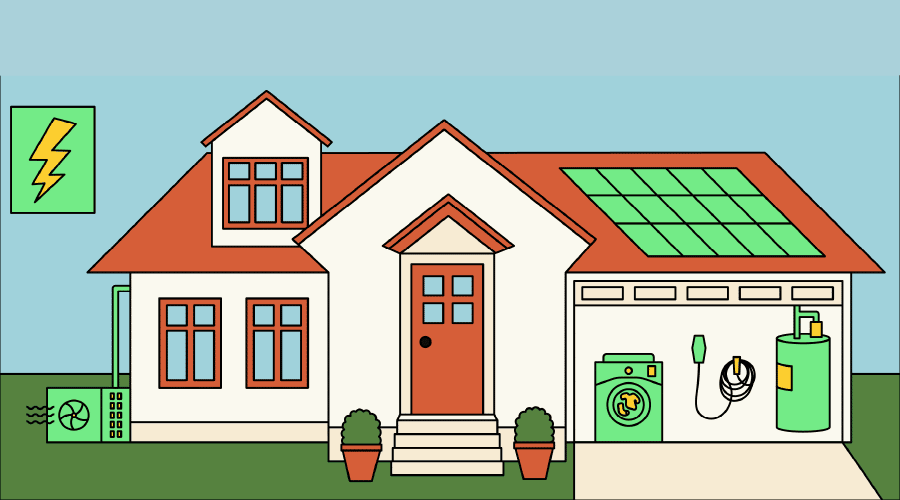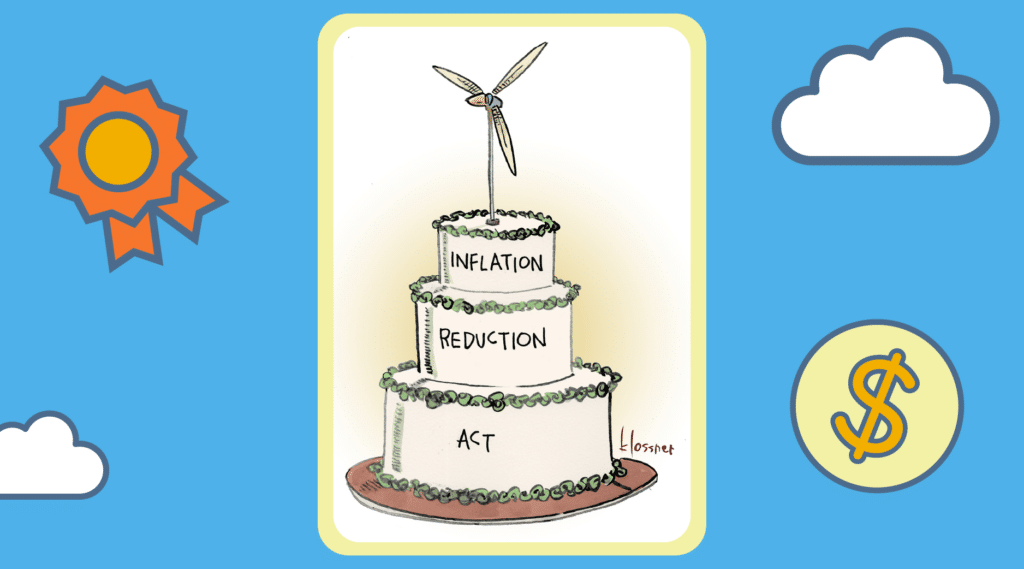Slowly but surely, the American electric grid is getting cleaner. In fact, we’ve added so much renewable energy that this summer, the biggest power generation boosts will come from wind turbines and solar panels. Just last week, President Biden announced an an Executive Order that will spur clean energy adoption, including help to expand manufacturing of heat pumps.
As growing amounts of clean energy come online, the electric grid becomes a key to unlock more climate benefits, because it can power a boatload of other products that historically have run on fossil fuels. This is why the idea to “electrify everything” is a major, common-sense solution for runaway climate change. Even better, it’s one we all have the power to deploy.
“For the most part, we decide what we drive, how we heat our water, what heats our homes, what cooks our food, what dries our laundry, and even what cuts our grass,” explains electrification advocate Saul Griffith. “This constitutes our ‘personal infrastructure,’ and it is swapping out that infrastructure that will be a key driver of the global transition from fossil fuels to green energy.”
Altogether, tens of millions of homes could be slashing their greenhouse gas pollution by switching out everyday equipment. Griffith’s nonprofit group, Rewiring America, estimates that a big part of reaching net-zero emissions comes down to replacing or installing 1 billion machines.
There are many ways you can put this into practice—Griffith names a lot of them above—but we’ll focus on two here: heat pumps and induction stoves. Why these? First, because more than half of a home’s energy use goes toward space heating and cooling. When it comes to heating, more than half of U.S. homes use some kind of fossil fuel. Second, at least 43% of us are using fossil fuels (again) in our kitchens. Mostly, “some kind of fossil fuel” means methane or “natural” gas, though in some cases, people are using propane and fuel oil.
Heat pumps… or… ‘clean green comfort machines’?
Some have argued that heat pumps need a rebrand, though great alternative names seem few and far between (we could be wrong, but guessing the ideas “Heaty McPumpface” and “Clean Green Comfort Machine,” from the Canary Media team aren’t likely to catch on anytime soon).
The name is indeed misleading, since heat pumps aren’t just for heat. Whatever you call them, these magical machines work year-round by capitalizing on the difference in temperature between outside and inside your home. In winter, heat pumps harvest heat energy from outside (yes, even though it’s cold) and move it indoors. In summer, the heat pump funnels warm air out, cooling it with a refrigerant coil and sending it back inside.
Of the three different types of heat pumps, air-source heat pumps tend to be the most common. They’ve been in use for years in areas of the U.S. with mild winters, but the technology has gotten so good that they’re newly viable even in cold climes. And as the U.S. Department of Energy notes, in summer they also dehumidify the air better than standard central air conditioners.
Because heat pumps are more efficient, they tend to save money on utility bills. In colder climates, one study found, they will save an average of $300 a year. If you’re heating with oil, as millions of homes do, especially in the Northeast, heat pumps could save you close to $1,000. The cost to install one is comparable to that for a furnace: The national average runs $5,676, according to one estimate. (See other handy guides here and here.)
While you save money, you’re making a big difference for the planet. By switching from a gas-fired furnace to an all-electric heat pump, a typical U.S. home could cut its pollution from heating between 45 and 72%, according to a study released earlier this year.
Heat pumps are hot right now, almost as hot as George Clooney. For a laugh, check out the story behind this viral Twitter thread of heat pumps that resemble Mr. Clooney.
Instant heat, cleaner air with induction
Let’s give credit where credit is due: The fossil gas industry has done an awesome job of marketing gas stoves to us for decades, (laugh along with Samantha Bee and learn how), despite the fact that gas ranges come with dangerous indoor air pollution, potential fire or injury, and explosion risk from leaks. The conventional wisdom for home cooks has been that gas stoves deliver more immediate and precise heat than electric ones.
Not so fast! Like heat pumps, induction cooktops have been around for a while but haven’t had the same promotional push behind them as gas stoves. That’s changing. As the hazards of cooking with gas become harder to ignore, it’s easy to find chefs and home cooks extolling the virtues of induction cooking, which works by transferring electromagnetically produced heat to the pan you’re using.
They heat-up fast—faster than gas or electric—and they offer the temperature precision you want. The cooking surface stays cool, and no methane-produced fumes end up in your lungs. Most models on the market cost less than $200—start cooking with magnets by visiting this handy guide on induction stoves.
Choosing an efficient electric heat pump or induction stove will guarantee years of avoided emissions—getting us closer to the clean energy future we want while saving money and making your home healthier.
Want to go a step further? Find out when you should go solar or buy an EV.

















